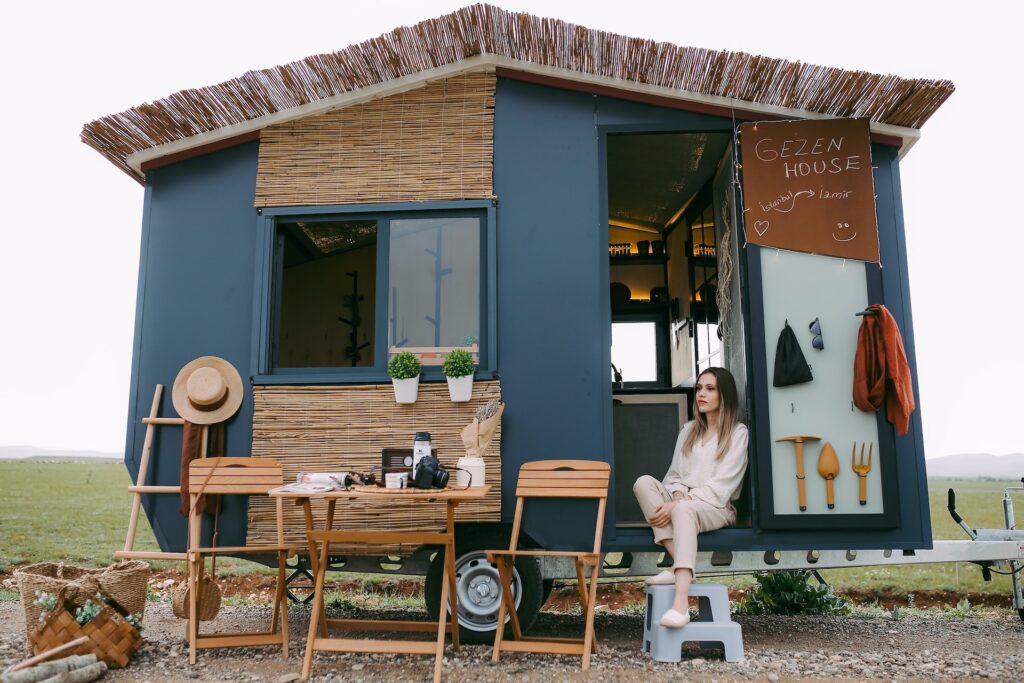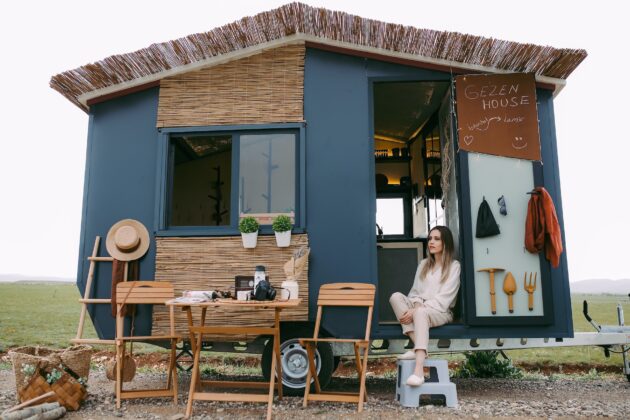
The idea of living in a tiny home has become increasingly popular in recent years. With the rise of minimalism and financial instability, many people are deciding to downsize their living space to save money or just to simplify their lives. Though it may sound counterintuitive, tiny houses can actually offer a wealth of benefits that make them attractive as an alternative form of housing. Before you make any kind of a down payment on a tiny house, you should know about home warranty too. The are many companies to choose from so do your research. For example, you can look up the cinch.com reviews to learn more.
Table of Contents
Introducing Tiny House Living – A Buzzword Explained
In general, tiny house living is considered to be any type of dwelling that is smaller than 500 square feet. These homes are typically constructed using unconventional materials such as reclaimed wood, upcycled shipping containers, or repurposed construction materials from demolition sites. Some people even opt for DIY projects such as trailer-mounted cabins or homes built on platforms so they can take their dwellings with them wherever they go! The idea behind tiny house living is to minimize your impact on the environment while also saving money on typical housing costs like rent/mortgage payments and utility bills.
Benefits Of Downsizing to A Tiny House
One of the main benefits of downsizing to a tiny home is that it allows you to enjoy all the comforts of traditional housing without having to pay for unnecessary expenses like large furniture and expensive appliances. Tiny homes are designed with efficiency in mind, meaning everything you need will fit within the limited space available. Additionally, you’ll have more free time since cleaning and maintaining a small area takes much less work than managing a bigger property. As a bonus, you’ll have more disposable income available for travel or other hobbies since your monthly housing costs will be significantly lower than those associated with traditional living arrangements.
Tips For Transitioning into The World of Tiny House Living
If you’re considering switching from traditional living arrangements to a mini-home lifestyle, there are several things you should keep in mind before taking the plunge. First, it’s crucial to think about how much space you need for your belongings and lifestyle; if you find yourself struggling with storage space or constantly feeling cramped inside your current home, chances are switching over to a tiny house could provide some much-needed relief!
You should also remember that sometimes less is more; stick with minimalistic decorating schemes and think outside the box when it comes to selecting furniture pieces or accessories (you may even want to consider investing in multi-functional items like ottomans that double as seating and storage). Lastly (and most importantly), don’t feel overwhelmed by all the changes ahead—take things one step at a time so you can adjust appropriately while still enjoying life along the way!
Financial Advantages of Going Tiny
Though some people choose tiny home living out of necessity due to financial constraints, others do so because they realize there are significant cost savings associated with this lifestyle choice. For instance, due to their smaller size and simpler design features, constructing/buying/renting these dwellings often requires less capital investment than traditional buildings–not only does this mean more money saved upfront, but it also translates into lower monthly bills for utilities like electricity/water/gas which can add up quickly over time! Additionally, because these dwellings require fewer resources during construction (for example, lightweight materials like plywood), their environmental impact tends to be much smaller than other types of housing options, which can help lessen your carbon footprint while reducing your energy bill too!
Must-Have Features for Your Tiny Home
When designing or purchasing a tiny home, certain features must be taken into consideration so you can get maximum usage out of its limited square footage—these include but aren’t limited to
- Proper insulation (to avoid heat loss)
- Efficient lighting fixtures (to save energy)
- Ventilation systems (to reduce moisture buildup) and ample storage solutions (such as cabinets or wall shelves)
Additionally, if possible, try adding larger window units that will let in natural light, thereby providing both visual appeal and energy savings at once! Finally, keep in mind that convertible furniture pieces can go a long way towards maximizing space within any room–these might include bunk beds made out of foldable tables which collapse down into flat surfaces when not in use or ottomans equipped with hidden compartments perfect for stowing away books or other items easily accessible yet still out-of-sight!
Troubleshooting Common Problems with Building or Buying a Tiny Home
Although building/buying/renting a mini abode offers several advantages over conventional housing options, they do come with some issues worth keeping an eye out for before diving headfirst into this type of lifestyle choice—some common problems include zoning regulations which may prohibit certain types of construction; finding suitable land in urban settings as well as (depending on the size/location) navigating around building codes and permits for both short-term and long-term living situations. However, don’t let these matters deter you from pursuing your dream of tiny house living—just take things one step at a time, do your research beforehand, and you’ll be sure to find success in the end!
